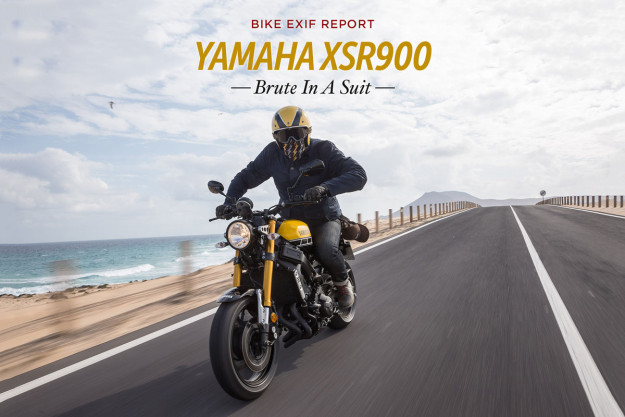
The dust had hardly settled on the XSR700 launch when Yamaha started teasing their next release. It started with Roland Sands’ Faster Wasp—a brutal custom FZ-09 inspired by the flat track.
It was obvious that Yamaha was poised to release a big brother to the XSR700. And right on cue, they revealed the XSR900 at the Italian EICMA show.
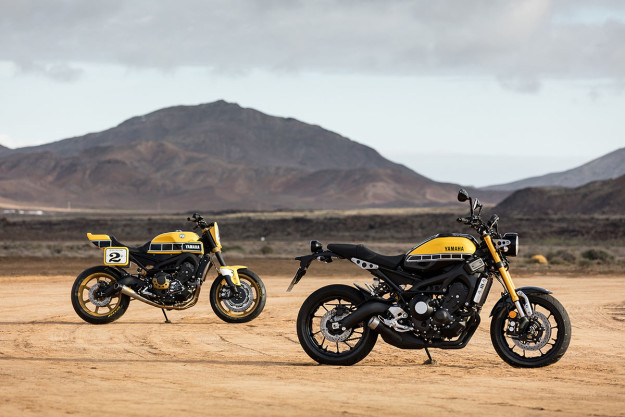
Like the XSR700, the XSR900 is a restyled version of an existing Yamaha model. It has the same rolling chassis and power plant as the FZ-09 (known as the MT-09 elsewhere), but wrapped in a more refined package.
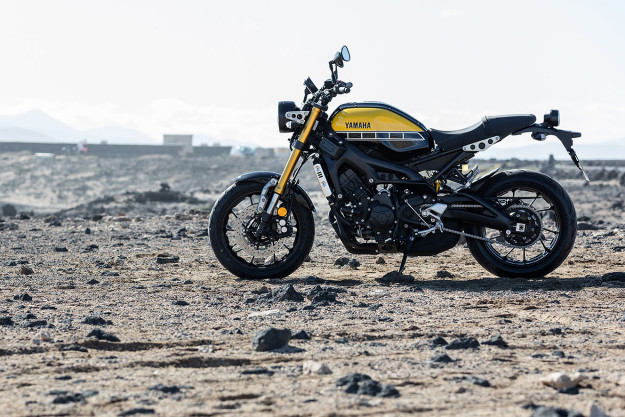
That puts it squarely in Yamaha’s ‘Faster Sons’ range: bikes that are stripped to the bare essentials, with a classic aesthetic. Modern day UJMs (Universal Japanese Motorcycles), if you will.
Some might see this as a marketing ploy, but Yamaha Motor Europe product manager—the ever-smiling Shun Miyazawa—sees it as a response to the shifting market. According to him, new customers are more interested in all-round appeal than outright performance.
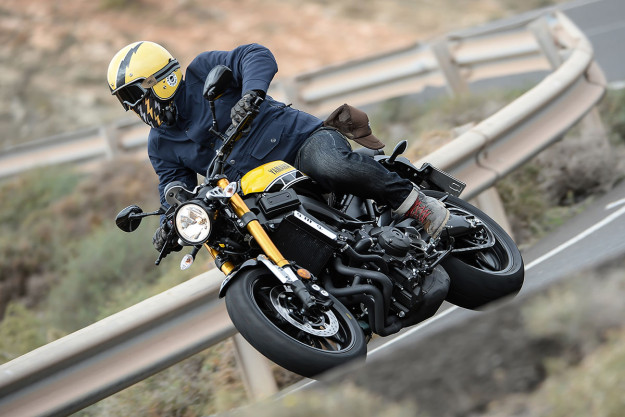
Not that the XSR900 doesn’t perform. After all, it’s packing the same triple cylinder, 847cc mill as the FZ-09, good for a claimed 87.5Nm of torque. It’s a brute—but like Daniel Craig, it’s a brute in a well-tailored suit.
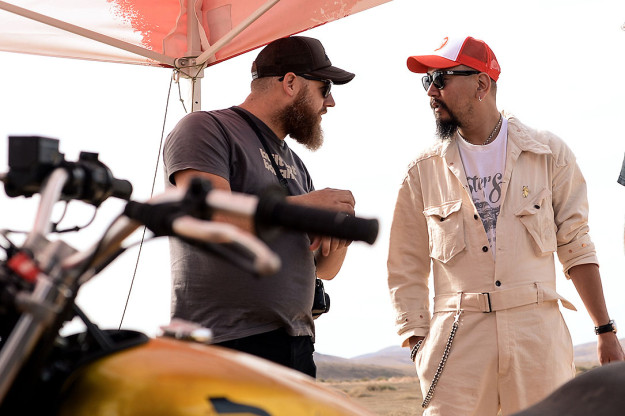
After touchdown in Fuerteventura, one of the Canary Islands, we spent the first day thrashing Yamaha SR400s around a pop-up flat track—under the tutelage of Marco Belli of the famed Di Traverso flat track school.
On day two, it was time to get acquainted with the new XSR900.
Disclaimer: Why are we reviewing a new production motorcycle? Because we were invited. To date, Yamaha is the only major manufacturer to invite us to be the first to ride a new bike. They’re also hugely enamored by the custom scene, having commissioned fifteen builds from the world’s top shops last year alone.
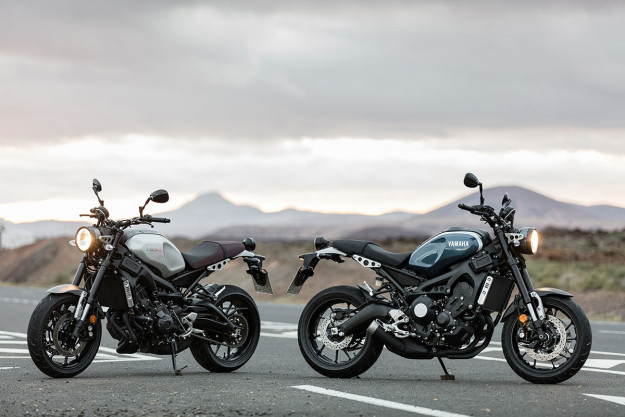
Styling Creating a throwback look with a modern motorcycle is tough—especially when it has a bulky-looking, die cast aluminum frame that cuts an awkward line. Yamaha knew they could do little to create that elusive ‘bone line’ through the middle that we all love.
Instead, they focused on smoothing out the flow across the top of the bodywork, shedding the FZ-09’s hunchback pose. A two-piece aluminum cover conceals a 14-liter steel tank. Holding the two halves together is a plastic center strip.
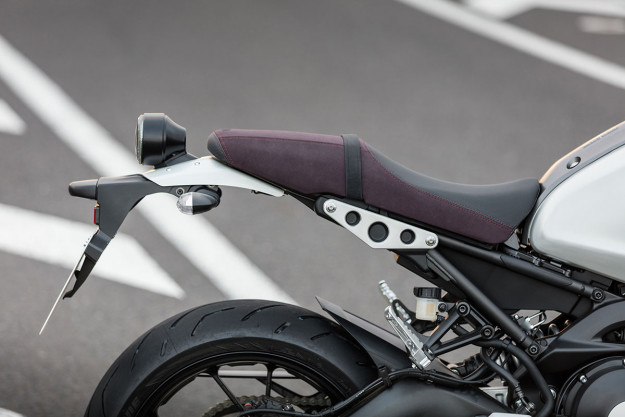
The tank’s knee indents flow nicely into the seat: a two-texture affair with a cafe racer-cum-street tracker vibe. The combination gives the XSR900 a muscular stance, but a surprisingly slim feel when seated.
Yamaha have tried to keep this bike as no-frills as possible. But that’s hard when you’re building a Euro 4 compliant machine. With a radiator, catalytic convertor and various sensors all battling for position, just about everything below the tank has wisely been finished in black. Even the wheels and exhaust headers have been murdered out, leaving the eye less to digest.
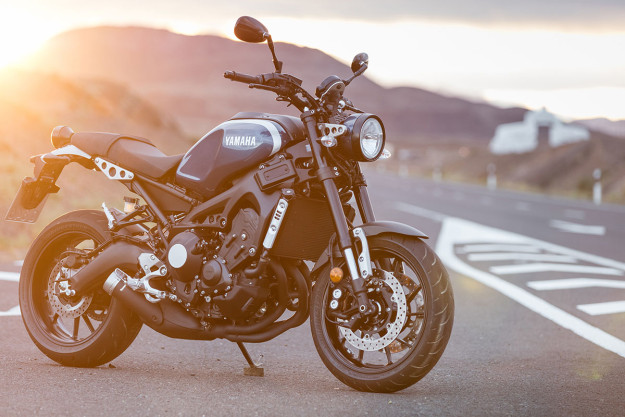
The overall design is far less fussy than the XSR700’s, with fewer components vying for attention. Rather, the details are thoughtful, and take inspiration from popular trends in customization—like the drilled, brushed aluminum headlight ears and frame supports.
The XSR700’s round head and taillights are still present—parts that Yamaha say will remain consistent on all future Faster Sons models. (We could swear the headlight was far more tucked on the XSR900 though.)
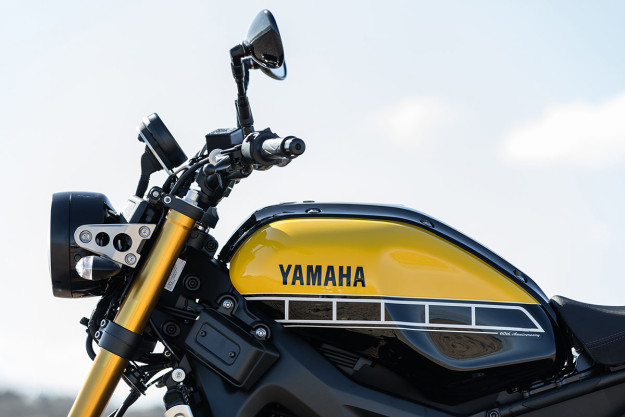
There were a couple of bits that had us scratching our heads though. For starters, there are two boxes, which house various electronic modules, placed on each side of the frame.
Once we saw them we couldn’t un-see them, and we wished they’d been hidden elsewhere. And we discovered that the right hand engine casing has a plastic cover over it, presumably to hide a sensor of some sort.
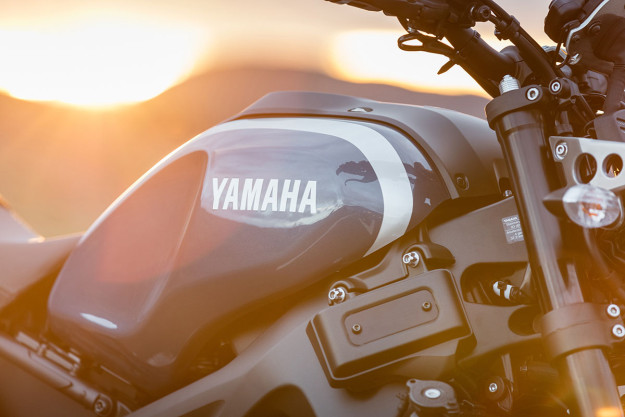
Those aside, we couldn’t fault Yamaha’s overall build quality. They’ve included a fair whack of metal—making the XSR900 four kilos heavier than the FZ-09, but leaving it with a classy feel that begs to be touched.
Miyazawa-san’s hope is that the metal bits develop their own patina over time, giving each bike a personal feel. And we were impressed by little touches—like the neat metal speedo bracket, and the tidy cable routing.
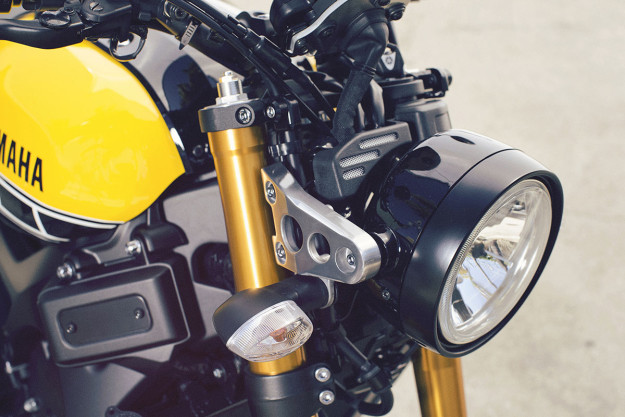
Colorways on offer include ‘Matte Grey’, ‘Rock Slate’ (blue) and ’60th Anniversary’ (yellow). No prizes for guessing our favorite. The ‘King Kenny’ livery had us swooning—especially the way that the black lower half of the tank helps straighten out the XSR900’s lines.